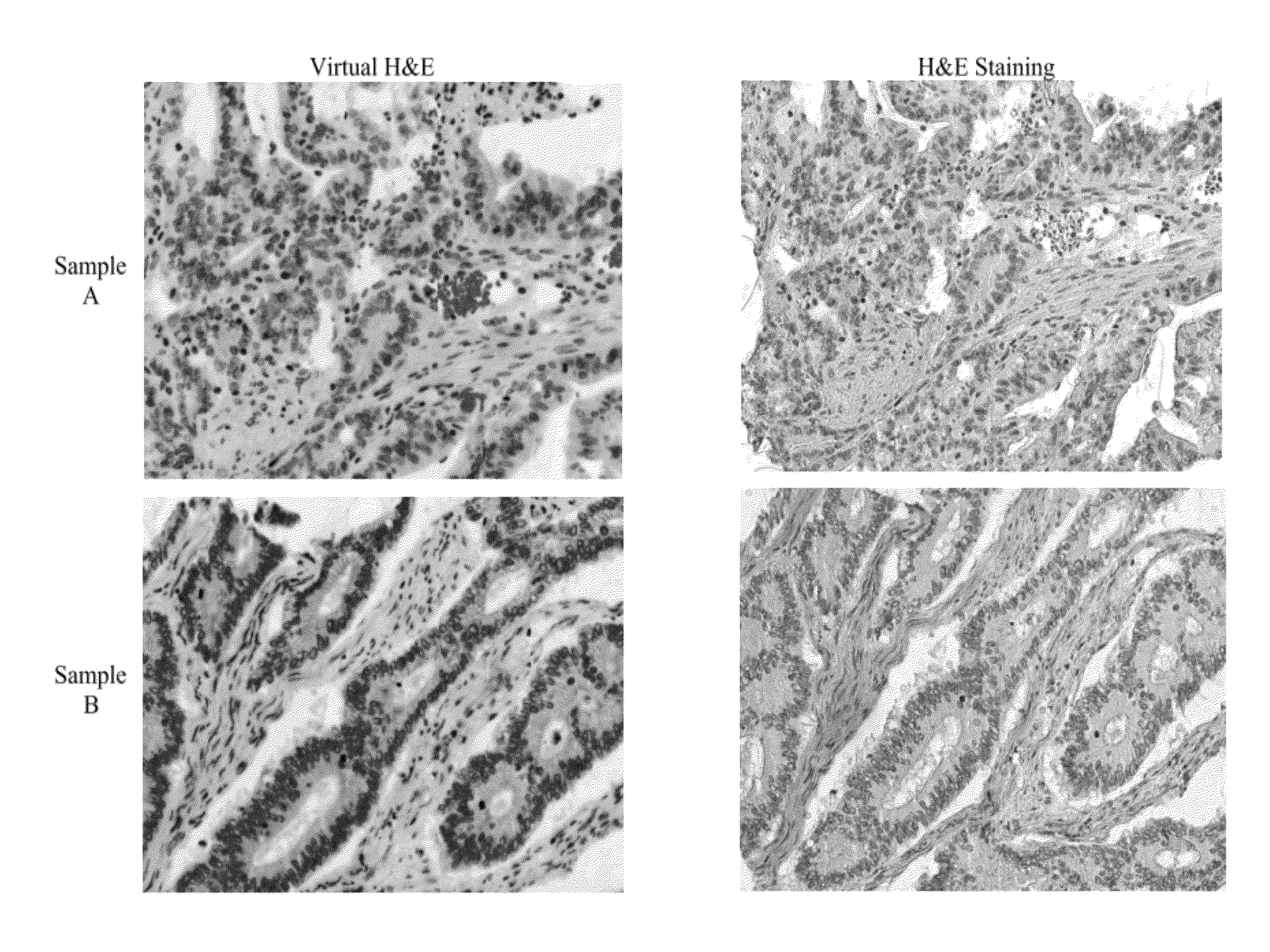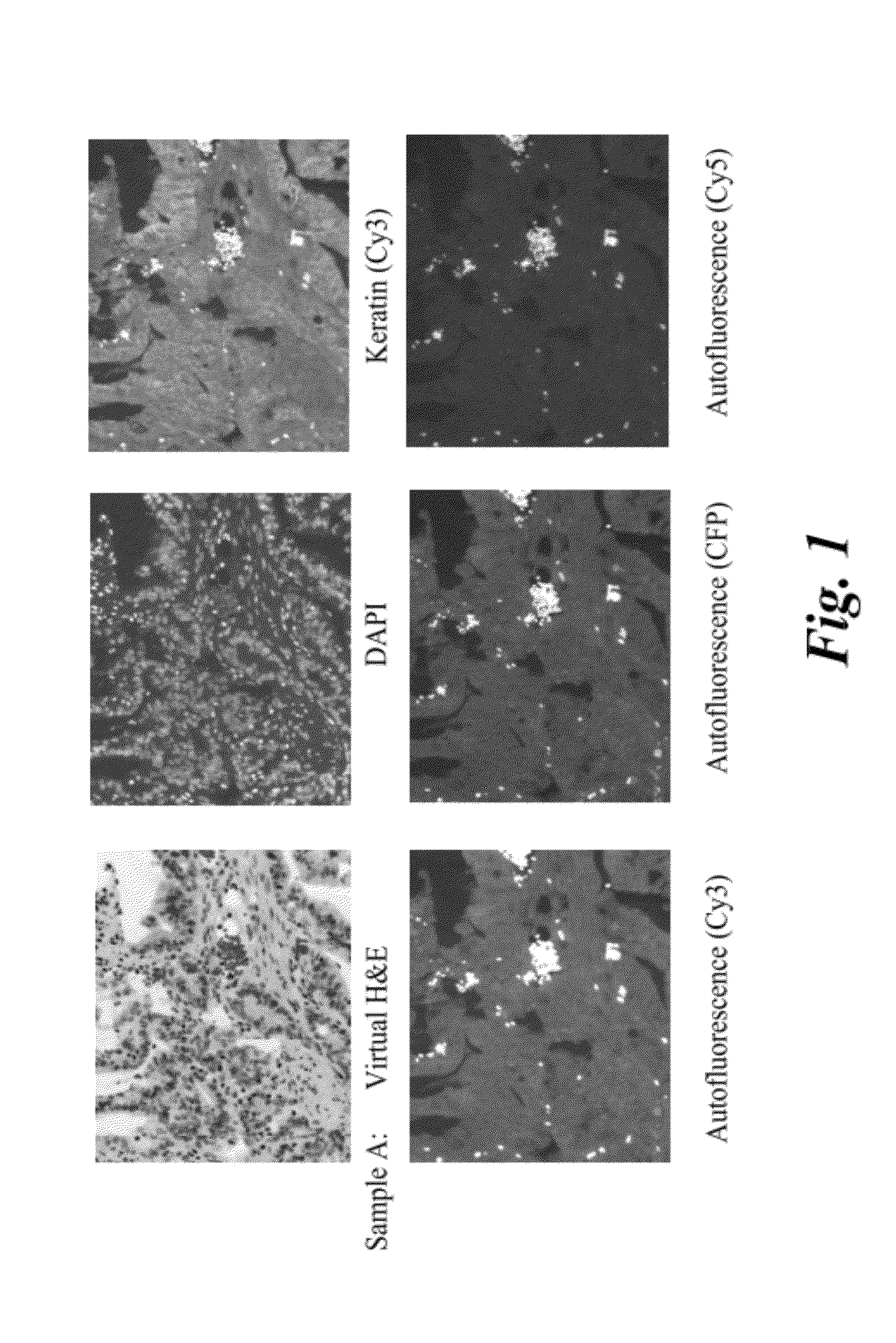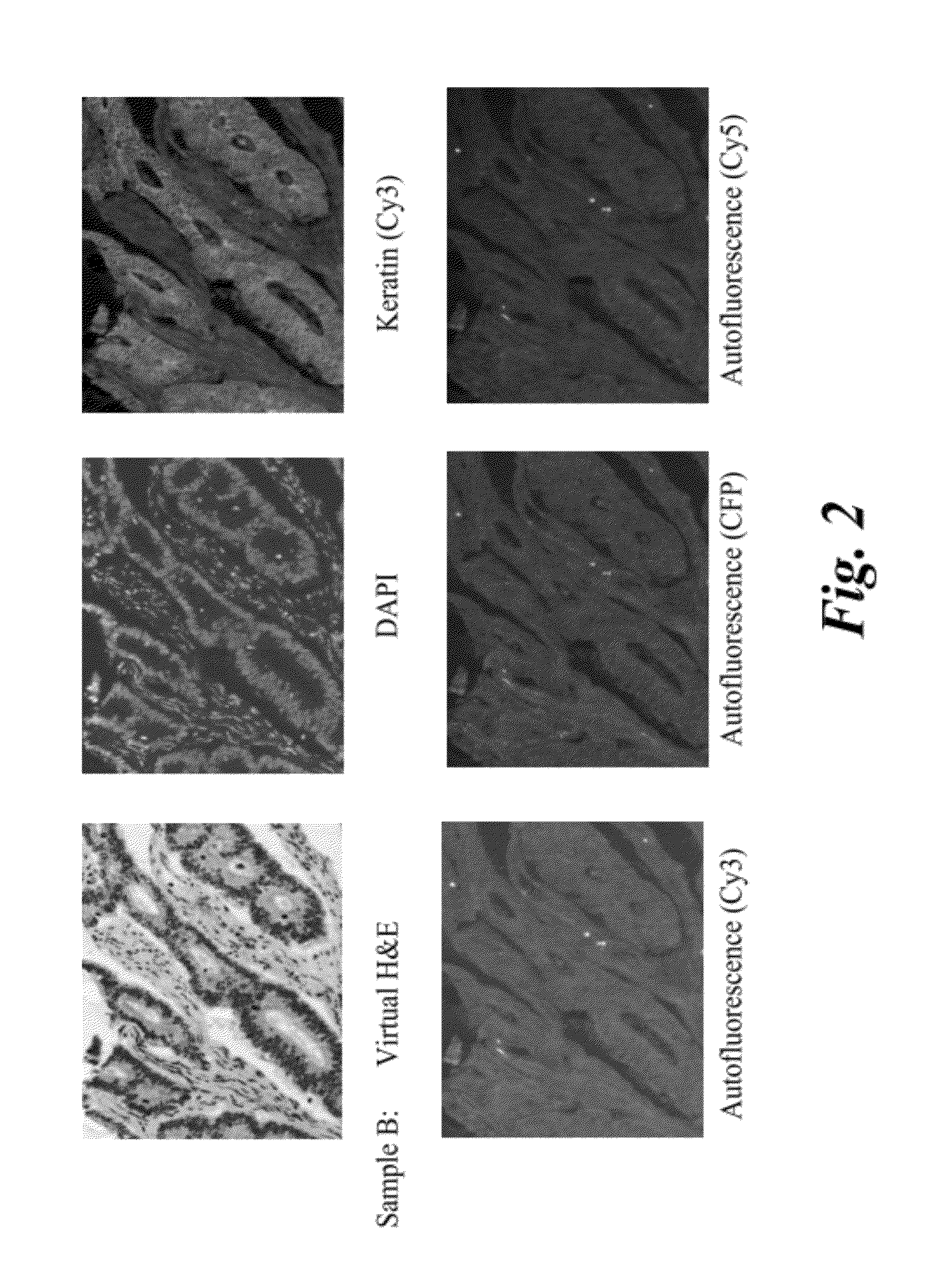System and methods for mapping fluorescent images into a bright field color space
a fluorescent image and color space technology, applied in the field of system and methods for mapping fluorescent images into a bright field color space, can solve the problem that the diagnosis of histopathological abnormalities based on fluorescent images is not a common practi
- Summary
- Abstract
- Description
- Claims
- Application Information
AI Technical Summary
Benefits of technology
Problems solved by technology
Method used
Image
Examples
example
Comparison of H&E Images for Colon Tissue Samples
[0076]Adult human colon tissue samples (Biochain, T2234090) were obtained as tissue slides embedded in paraffin. Paraffin embedded slides, of adult human tissue, were subjected to an immunohistochemistry protocol to prepare them for staining. The protocol included deparaffinization, rehydration, incubation, and wash. Deparaffinization was carried by washing the slides with Histochoice (or toluene) for a period of 10 minutes and with frequent agitation. After deparaffinization, the tissue sample was rehydrated by washing the slide with ethanol solution. Washing was carried out with three different solutions of ethanol with decreasing concentrations. The concentrations of ethanol used were 90 volume %, 70 volume %, and 50 volume %. The slide was then washed with a phosphate buffer saline (PBS, pH 7.4). Membrane permeabilization of the tissue was carried out by washing the slide with 0.1 weight percent solution of Triton TX-100. Citrate ...
PUM
 Login to View More
Login to View More Abstract
Description
Claims
Application Information
 Login to View More
Login to View More - R&D
- Intellectual Property
- Life Sciences
- Materials
- Tech Scout
- Unparalleled Data Quality
- Higher Quality Content
- 60% Fewer Hallucinations
Browse by: Latest US Patents, China's latest patents, Technical Efficacy Thesaurus, Application Domain, Technology Topic, Popular Technical Reports.
© 2025 PatSnap. All rights reserved.Legal|Privacy policy|Modern Slavery Act Transparency Statement|Sitemap|About US| Contact US: help@patsnap.com



